Last week's study went over well, so how about another study from Alexis Troitzky? It's white to play and win in this position:
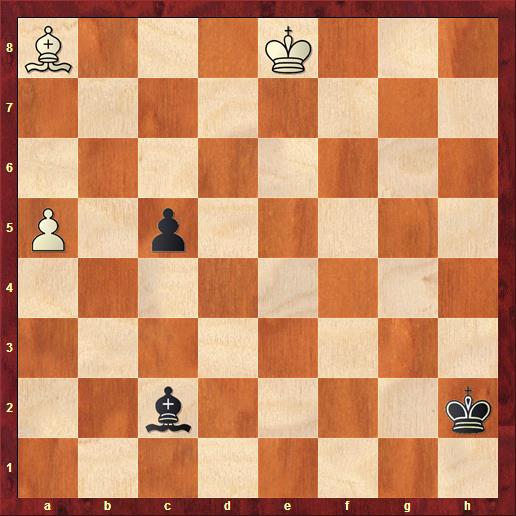
There is an astonishing amount of strategy wrapped up in this simple position!
Let's start with some general considerations. White must try to promote his pawn as quickly as possible. Something like 1. Bd5, to slow down black's pawn, just won't work after 1. ... Bd3. Once white starts pushing his pawn, black will have to do likewise. Both sides will need one move to move their bishops out of the way of their pawns. At first blush, it seems like white will win the race, but keep in mind that black will be able to gain a tempo by giving check with his bishop.
So let's see what happens. Play begins with the obvious 1. a6 c4 2. a7 c3.

Now what? It seems like white must make a throwaway move with his bishop. Black will reply by giving check and then advancing his pawn. Both sides will promote and a draw will ensue.
But not so fast! White does have a useful move with his bishop. He plays 3. Bh1!
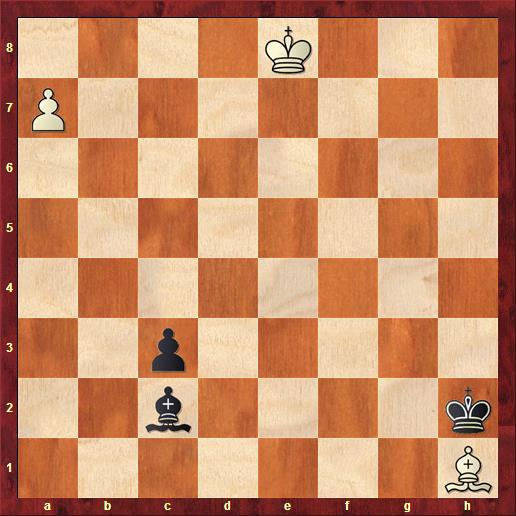
See the point? Now, after white promotes, he will be threatening to give mate on g2. You might recall that white's maneuver, where a line piece crosses a square so that a similar-moving line piece can then occupy that square is called a Bristol clearance. This is an especially clever version of it, since the second line piece does not yet exist.
Okay, what can black do now? Taking the bishop obviously does not work. White will just promote with check and that will be that. He needs a creative idea, and it starts with giving check. But should he give check at a4 or g6? Only one prolongs the game significantly. Black must play 3. ... Ba4+! to which white must reply 4. Kf7!.
The reason black could not play 3. ... Bg6+ will become clear after black's next. The reason white must reply with 4. Kf7 will become clear eight moves from now.
Black now plays 4. ... Bc6!
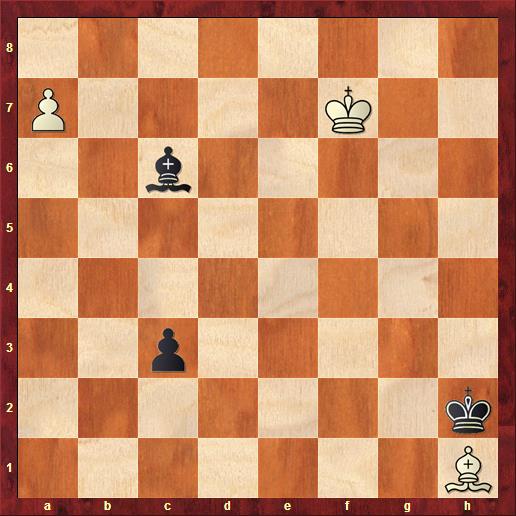
That's the point. White is forced to take the bishop, after which his little mate threat is neutralized. Had black given check on g6 at move three, he would be playing 4. ... Be4 now. But that is no good, since white will have c2 covered after taking with his bishop.
Now it turns out both sides will promote after all. Play continues 5. Bxc6 c2 6. a8Q c1Q.
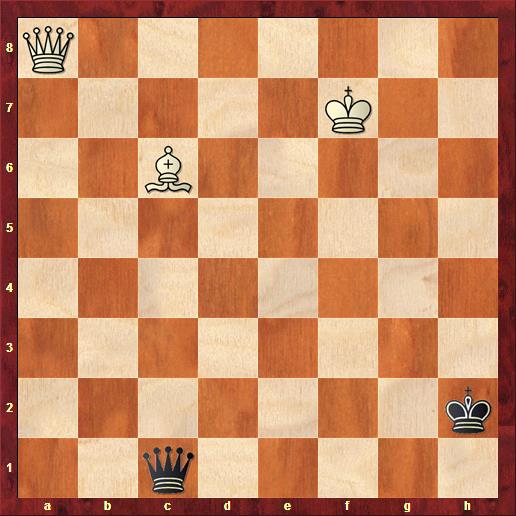
So is it a draw? Has black survived? Q+B vs. Q is normally a draw, barring some immediate tactical resource. To which white replies, “It depends what you mean by immediate.” White now plays 7. Qa2+!. Again, only this! After 7. Qb8+ or 7. Qh8+ white just runs out of checks pretty quickly. My admiration for Troitzky only increases when I consider that he did not have a computer to work out all the variations.
Play continues 7. ... Kg3 8. Qg2+ Kf4
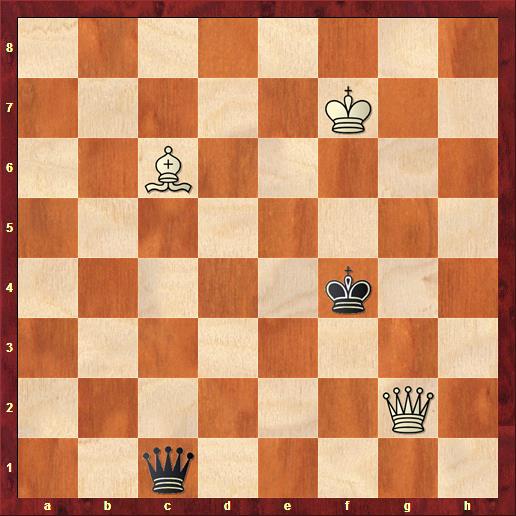
Suffice it to say that 8. ... Kh4 9. Qf2+ is no better. Play continues 9. Qf3+ Kg5. Of course, 9. ... Ke5 10. Qf6 mate is not good for black. 10. Qg3+
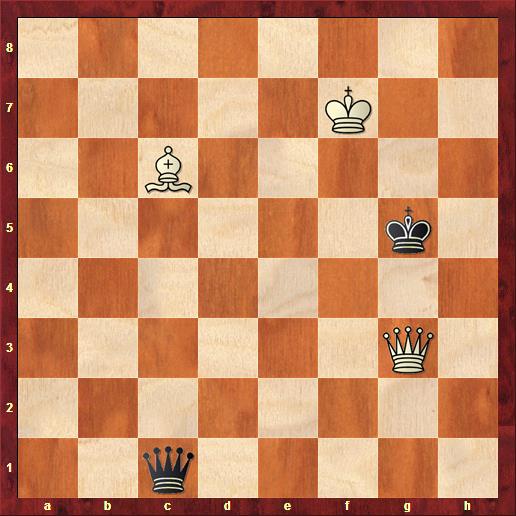
Now what? 10. ... Kh6 11. Qg6 mate is not good, and 10. ... Kh5 11. Bf3+ Kh6 12. Qg6 mate is no better. That only leaves one possibility: 10. ... Kf5 11. Qg6+!
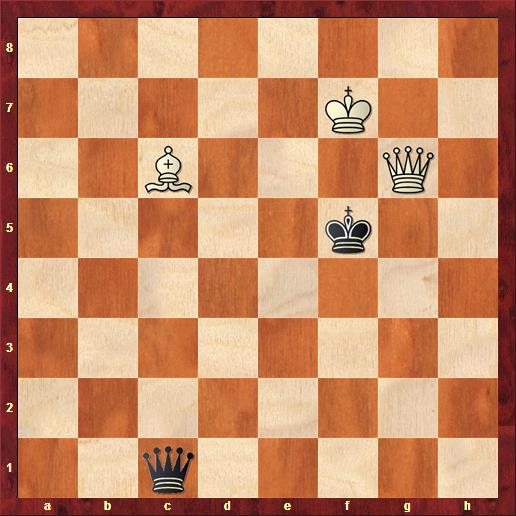
And that's why white had to put his king on f7 all those moves ago. The square g6 had to be covered so white could give this check.
But now it's game over. Black can choose between 11. ... Ke5 12. Qf6 mate, or 11. ... Kf4 12. Qh6+ winning the queen. Or he can resign.
Great stuff! See you next week!

Just unbelievable! How something this complex can develop from wisps of possibilities hidden in fields full of draws.....
Very impressive; I can say without a shadow of a doubt that I would never find that over the board. It just seems intuitively obvious at move 4 to put your king on a black square so it cannot be checked again by the bishop, but that throws away the win.
Interestingly, my computer prefers 4 ... Bb3+ over 4 ... Bc6; it agrees that there is a forced mate in 20 (beginning with 5 Kf6) but after 4 ... Bc6 it is a forced mate in 13 (beginning, of course, with 5 Bxc6). After 11 ... Kf5 12 Qh6+ not only wins the queen but it is mate in 6 (including Qh6+). Of course the difference between a forced mate in 20 and a forced mate in 13 is quite arguable; it is certainly true that after 4 ... Bc6 White must play a lot more accurately than after 4 ... Bb3+.